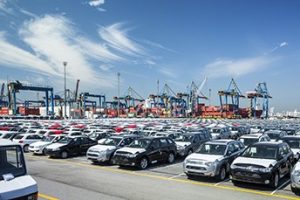Brazilian passenger car exports in the first eight months of this year have increased by 57% to almost 481,390 units, according to figures from the country’s National Association of Automotive Vehicle Manufacturers (Anfavea).
Overall vehicle exports, which includes commercial vehicles and buses, have increased to 506,000 units over the same period, up from 321,220 between January and August last year, also an increase of 57%.
After a hard four-year downturn the steep increase has led Anfavea to revise its overall vehicle export forecast for the year to 745,000, an increase of more than 43% on the 705,000 units originally estimated for 2017.
In terms of revenue, this has now been adjusted upwards from almost $14 billion to $15.1 billion.
The recovering domestic market has also resulted in revised projections for the year, with original sales of 2.1m units adjusted upwards to 2.2m units, which would be year-on-year growth of 7.3%.
Overall production should also increase from the earlier estimate of 2.6m to 2.7m units. Vehicle output in Brazil to August this year stood at 1.75m and of that passenger vehicles accounted for 1.68m, a 25.6% increase on the same period in 2016. Overall vehicle production in Brazil last year hit 2.08m units.
According to Anfavea’s figures, total vehicle production for the month of August stood at 260,350, the best month for production since November 2014.
Commenting on the results to government news agency, Agência Brasil, Anfavea president Antonio Megale noted what the automotive sector now needed was economic stability to allow both consumers and investors to grow in confidence and for economic activity to accelerate.
Figures for August show that revenue from automotive exports was up by 58% to $1.46 billion compared to the same month in 2016 and up 3.3% on July 2017.
Megale noted that the "extraordinary growth” reflected efforts made by the sector to find overseas markets even as the domestic market has shown signs of recovery. Trade agreements with other countries have also boosted exports and this trend is expected to continue into the future.
Sales at home in the first eight months amounted to 1.42m units, which is growth of 5.3%. In August, 216,500 units were sold, up 17.2% on the previous month and 17.8% over August 2016.

























![Global[1]](https://d3n5uof8vony13.cloudfront.net/Pictures/web/a/d/s/global1_726550.svgz)










